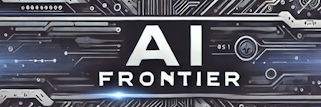# AI vs. Artist: The Future of Creativity
As we continue to delve deeper into the technological revolution, we find ourselves questioning the boundaries of human talent and artificial intelligence. One such area where this question arises is art and creativity. In this blog post, we will explore the dynamic relationship between AI and artists, as discussed in a captivating article published on the [Cornell Tech](https://tech.cornell.edu/news/ai-vs-artist-the-future-of-creativity/) website.
##
The Intersection of AI and Creativity
Art has always been considered an expression of human emotion and thought. However, the advent of artificial intelligence has begun to blur the lines between human and machine-produced art. AI technology has evolved to a point where it can now generate music, write poems, and even paint pictures that are incredibly similar to those created by human artists.
Key point: AI is now capable of creating art that closely mimics human-generated art.
There are several examples of AI-produced art that have stunned both the art and tech worlds. In 2018, an AI-generated portrait called “Portrait of Edmond de Belamy” was sold at Christie’s auction house for a staggering $432,500. This bold move was a clear indication that AI has the potential to revolutionize the art world.
##
AI in Art: The Process
Artificial intelligence creates art using a method called Generative Adversarial Networks (GANs). Here’s a brief insight into how it works:
– AI is fed with thousands of images as a data set.
– This data set is divided into two parts: the generator and the discriminator.
– The generator creates new images based on the data set.
– The discriminator evaluates these images against the original data set.
– The process continues until the discriminator cannot differentiate the AI-generated image from the original data set.
Key point: AI uses a process called Generative Adversarial Networks (GANs) to create art.
This process enables AI to create art that is not just random, but purposeful and aesthetically pleasing. For a more in-depth understanding of how AI creates art, you can read our previous blog post [here](/blog/how-ai-creates-art).
##
Artists vs. AI: The Debate
The increasing capabilities of AI in the realm of art have sparked a debate among artists and technologists. Many artists express concern that AI might replace human creativity, while others see it as a tool that can enhance their creative process.
Here are some of the arguments from both sides:
– Artists argue that art is an expression of human emotion and experience, something that a machine cannot replicate.
– Technologists argue that AI can create art that is indistinguishable from human-produced art, thus expanding the boundaries of creativity.
Key point: The debate revolves around whether AI can truly replicate or enhance human creativity.
In the article, [MIT](https://news.mit.edu/2020/artificial-intelligence-analyzes-gravitational-waves-1007) is mentioned as a source which highlights how AI is revolutionizing various fields, including art.
##
The Future of Creativity
Despite the ongoing debate, it is undeniable that AI has a significant role to play in the future of creativity. AI can be a valuable tool for artists, providing them with new ways to express their creativity and innovate. It can also democratize art, making it accessible to more people.
– AI can help artists explore new mediums and styles.
– AI can open up the world of art to non-artists, providing them with tools to create their own art.
– AI can also be used to preserve and digitize art, ensuring its survival for future generations.
Key point: AI holds immense potential to revolutionize the art world, both for artists and non-artists.
# Conclusion
The intersection of AI and art is a fascinating, evolving landscape. While there are valid concerns about AI replacing human creativity, it is equally possible that AI will serve as a tool that enhances and expands the scope of human creativity. As we continue to explore this dynamic, it is clear that the future of creativity lies in a synergistic relationship between AI and the artist.
As we embrace this new era of creativity, it is essential to continue the dialogue between artists and technologists. This will ensure that we harness the power of AI to enhance human creativity, rather than replace it. The [original article](https://tech.cornell.edu/news/ai-vs-artist-the-future-of-creativity/) on Cornell Tech provides a thought-provoking exploration of this topic, and I encourage all readers to delve deeper into this fascinating subject.
